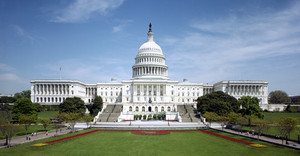Professor Richard G Frank from the Department of Health Care Policy, Harvard Medical School, Boston, USA, discusses factors that may account for the slow development of competition in the market for biosimilars in the US [1].
Obstacles to the use of biosimilars in the US
Biosimilars/Research
|
Posted 13/04/2018
 0
Post your comment
0
Post your comment

An abbreviated pathway for biosimilars was signed into law as part of the Affordable Care Act in 2010 [2]. However, it took five years before the US Food and Drug Administration (FDA) approved its first biosimilar, Zarxio (filgrastim-sndz) in March 2015 [3]. To date, the agency has approved nine biosimilars, of which only seven are on the US market. This compares with Europe, which created a biosimilars pathway in 2005/2006 and had already approved its first biosimilar Omnitrope (somatropin) in April 2006 [4]. There were also 14 biosimilars on the European market at a similar point in time after a pathway was created.
Professor Frank highlights factors, including naming, interchangeability guidance, insurance payment arrangements and secrecy about manufacturing processes; that probably account for the slow development of competition in the US biologicals market.
He points out that although the factors separately may only have modest effects, ‘together they are additive and most likely contribute to the slow development of competition in the biologic[al]s market’ in the US.
It is estimated that currently, only US$3.2 billion (3%) of US spending on biologicals is subject to competition from biosimilars. With spending on biologicals estimated to be US$105.5 billion in 2016 and increasing by an average 10% per year, there are huge potential savings to be made with increased use of biosimilars.
The factors are discussed in more detail in the series of four articles that follow.
Conflict of interest
Disclosure forms provided by the author [1] are available at NEJM.org.
Related articles
Secrecy is an obstacle to the use of biosimilars in the US
Insurance payment arrangements are an obstacle to biosimilars use in the US
Interchangeability is an obstacle to the use of biosimilars in the US
Naming is an obstacle to the use of biosimilars in the US
References
1. Frank RG. Friction in the path to use of biosimilar drugs. N Engl J Med. 2018;378(9):791-3.
2. GaBI Online - Generics and Biosimilars Initiative. When will the US biosimilars pathway be used [www.gabionline.net]. Mol, Belgium: Pro Pharma Communications International; [cited 2018 Apr 13]. Available from: www.gabionline.net/Biosimilars/News/When-will-the-US-biosimilars-pathway-be-used
3. GaBI Online - Generics and Biosimilars Initiative. Biosimilars approved in the US [www.gabionline.net]. Mol, Belgium: Pro Pharma Communications International; [cited 2018 Apr 13]. Available from: www.gabionline.net/Biosimilars/General/Biosimilars-approved-in-the-US
4. GaBI Online - Generics and Biosimilars Initiative. Biosimilars approved in Europe [www.gabionline.net]. Mol, Belgium: Pro Pharma Communications International; [cited 2018 Apr 13]. Available from: www.gabionline.net/Biosimilars/General/Biosimilars-approved-in-Europe
Permission granted to reproduce for personal and non-commercial use only. All other reproduction, copy or reprinting of all or part of any ‘Content’ found on this website is strictly prohibited without the prior consent of the publisher. Contact the publisher to obtain permission before redistributing.
Copyright – Unless otherwise stated all contents of this website are © 2018 Pro Pharma Communications International. All Rights Reserved.
News
FDA approves six denosumab biosimilars
EMA recommends approval for four biosimilars targeting three therapies
General
Samsung Bioepis wins Pyzchiva case; Regeneron patent rulings threaten foreign biosimilars
Chinese biosimilars go global: growth, partnerships, and challenges
What is the future for the US biosimilar interchangeability designation

Biosimilars/Research Posted 05/06/2025
Biosimilar clinical efficacy studies: are they still necessary?

Biosimilars/Research Posted 27/05/2025
The best selling biotechnology drugs of 2008: the next biosimilars targets








Post your comment